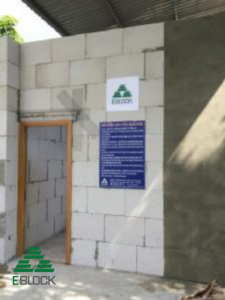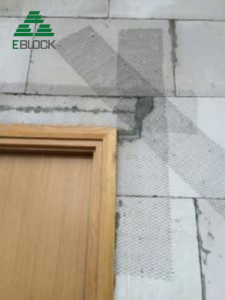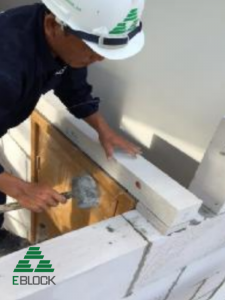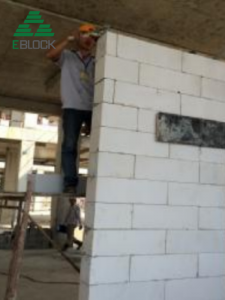1. AAC WALL AND CONCRETE PILE CONNECTION POSITION
- Use the steel anchor recommended by the manufacturer
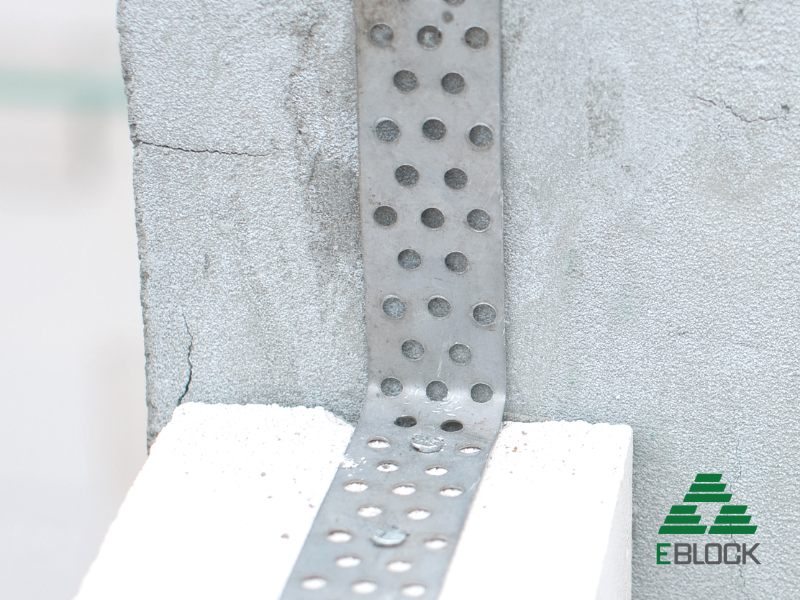
- Can use traditional frame-tie 6-8mm diameter
2. CONNECTION AT CORNER LOCATION WITH NO CONCRETE PILE
The continuous corner of T and V walls will be built by the method of avoiding overlapping lines between AAC rows (the distance between the two vertical lines is not less than 25% of AAC blocks length, equivalent to 150mm).
[illustration]
3. CONNECTION AT WINDOW AND DOOR LOCATION
To limit duplication at this position, we need to attach an oblique angle steel mesh of 45 ° to limit cracks.
4. CONNECTION AT SUPPORTING BEAM, LINTEL
Can use AAC Lintel supplied by Eblock or plastering directly lintel on AAC Wall which is up to the contractor’s installation method.
5. COMMON MISTAKES WHEN CONSTRUCTION WALL
a. Add cement (or sand) when mixing adhesive mortar or arbitrarily change the content of water.
Consequences: Improperly formulated mortar mixes can lead to faster loss of water and poor adhesion to AAC block.
b. Don’t use a specific steel trowel
Consequences: Mortar is not evenly distributed on 2 sides of 2 bricks.
Using special trowel (sawtooth): Mortar is evenly distributed on 2 sides of 2 blocks.
[illustration]
c. Do not use a hammer to tap on blocks when aligning (using your hands) or tapping too lightly.
Consequences: Poor adhesion between two contact surfaces.
d. Do not use a ruler to check the flatness of the wall and the horizontal level of each row of blocks
Consequences: It may result in knocking of blocks after the mortar layer is no longer able to adjust, causing mortar flaking and the mortar to no longer adhere.
e. Mortar circuit is not full:
Consequences: Can see through the mortar circuit.

